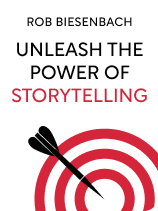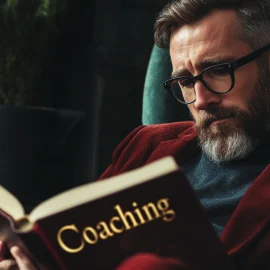

This article is an excerpt from the Shortform book guide to "Unleash the Power of Storytelling" by Rob Biesenbach. Shortform has the world's best summaries and analyses of books you should be reading.
Like this article? Sign up for a free trial here.
If you’ve got a beginning, a middle, and an end, do you have a story? What’s missing?
In his book Unleash the Power of Storytelling, speechwriter-turned-actor Rob Biesenbach believes that a story’s structure matters. But, he contends that there’s something even more important. He explains how to infuse certain processes into the structure to create a truly engaging story.
Continue reading to learn, not just how to structure a story, but how to breathe life into that structure.
How to Structure a Story
Want to know how to structure a story? We tend to think of a story as any narrative with a beginning, a middle, and an end. But, Biesenbach thinks that definition of a story is too simplistic. He explains that certain things need to happen at each point in the structure to make a story: The structure of beginning, middle, and end on its own is just a series of events ordered from start to finish.
But, by crafting each of these phases of your story with a specific purpose in mind, you can use that structure to ensure that you have all the essential pieces of a good story. Biesenbach explains how you can map the essential elements of character, goal, and obstacles onto the familiar beginning-middle-end arc:
- At the beginning, set the scene, introduce your character, and set up an event that pushes your character into action to pursue their goal.
- In the middle, show the character working to overcome the obstacles that stand between them and their goal.
- At the end, give the character (and the listener) a resolution: Either the character reaches their goal or they don’t. (Without a resolution, your story will feel anticlimactic, frustrate listeners, and leave them confused about your message.)
| Updating the Idea of “Beginning, Middle, and End” Recent psychological research agrees with Biesenbach in that following a predetermined structure when you tell a story is less important than including specific processes in the story. Researchers analyzed around 60,000 narratives—ranging from novels to newspaper articles to TED talks—to see what they had in common. The analysis revealed three processes that the stories had in common: staging, plot progression, and narrative tension. Staging, which typically happens at the beginning of the story, involves establishing the basic background for the story. Who are the characters and what are the relationships between them? When and where does the story take place? Plot progression, which starts as soon as the scene is set at the beginning of the story and carries through to its climax, involves moving the story forward and illustrating not only what happens to the character but how they respond to those events. Narrative tension plays a role throughout the story as the character struggles with the obstacles that the plot puts in their path: processing the situation, figuring out a solution, and building a new understanding of their world. The researchers note that these three narrative processes should occur in all stories, regardless of the specific events or characters of the story. Thinking of your story in terms of staging, plot progression, and narrative tension can make it easier to visualize what you need to include than simply thinking in terms of “beginning, middle, and end.” |

———End of Preview———
Like what you just read? Read the rest of the world's best book summary and analysis of Rob Biesenbach's "Unleash the Power of Storytelling" at Shortform.
Here's what you'll find in our full Unleash the Power of Storytelling summary:
- How telling a story can make any message more compelling
- The unique power stories have to influence us and shape our emotions
- The crucial pieces that make up a story (other than the beginning, middle, and end)






